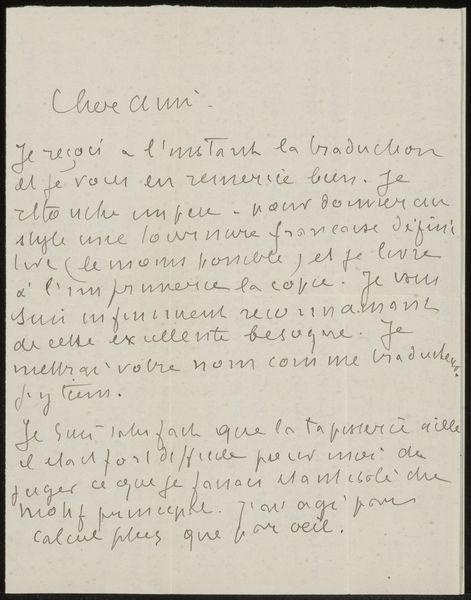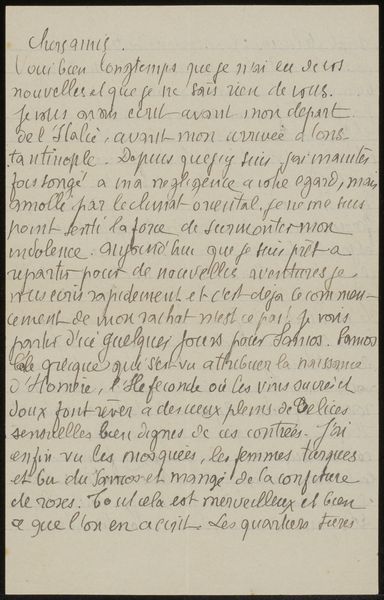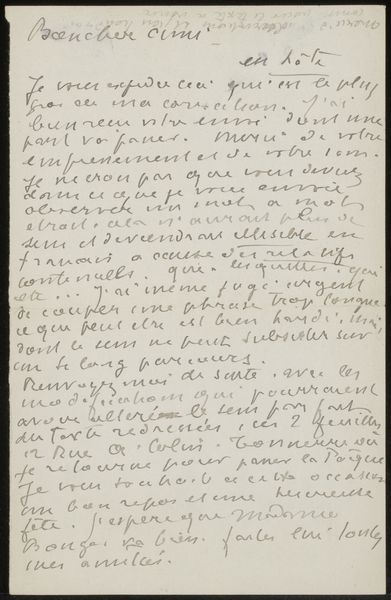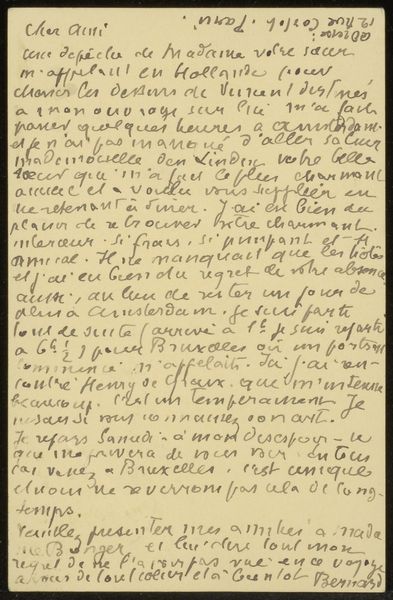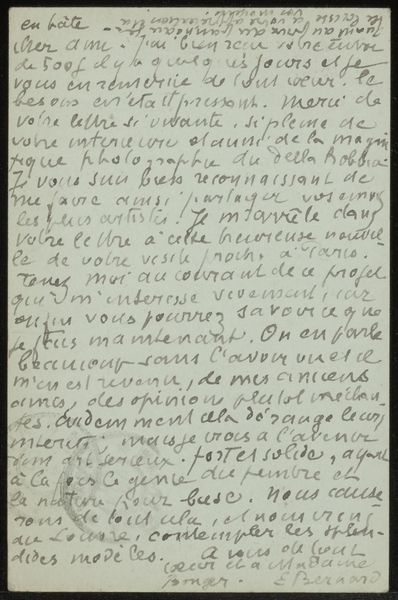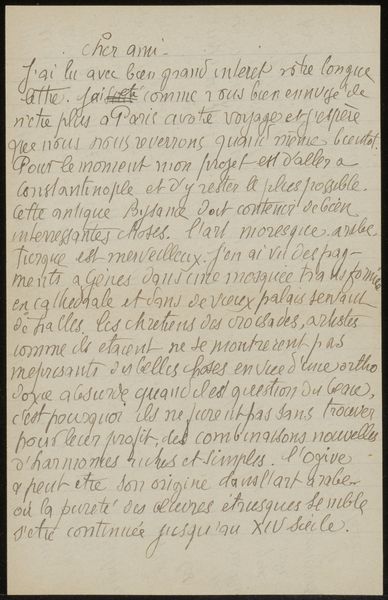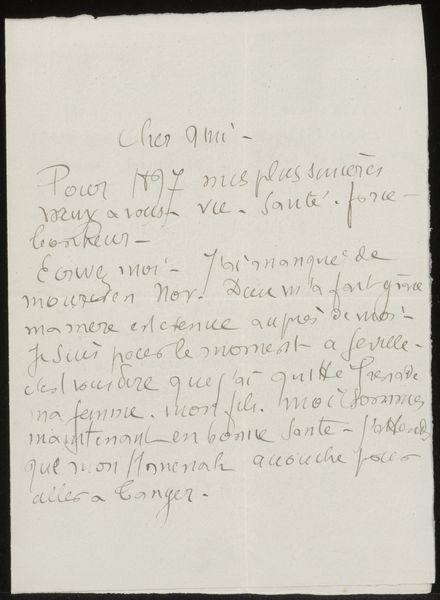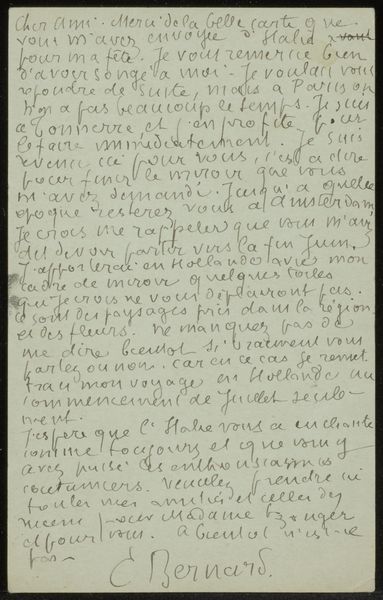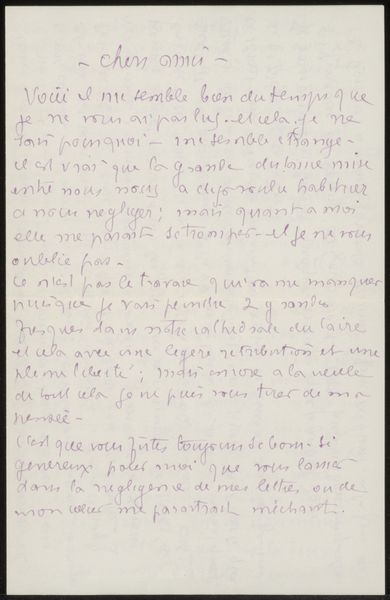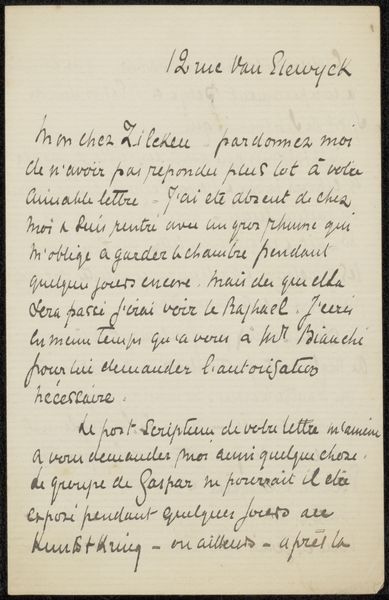
drawing, ink
#
drawing
#
sand serif
#
hand written
#
script typography
#
hand-lettering
#
hand drawn type
#
hand lettering
#
ink
#
hand-written
#
hand-drawn typeface
#
thick font
#
handwritten font
Copyright: Rijks Museum: Open Domain
Curator: We're looking at "Brief aan Andries Bonger," a letter penned by Émile Bernard. Though undated, it likely precedes 1907 and is crafted with ink, a simple drawing capturing something very intimate. Editor: Intimate is right. The cursive, the slightly smudged ink – it gives me a distinctly melancholic vibe. It's so personal, as if we're eavesdropping on a private thought. I imagine dim lighting, maybe the scratch of a pen late at night. Curator: These sorts of missives allow us to connect intimately with the artistic circles of the era. Andries Bonger, the recipient, was a crucial figure—Theo van Gogh's brother-in-law, who was an important collector. Their circle created a vital marketplace for impressionist and post-impressionist artists. This letter is but a fragment of their sustained discourse. Editor: So, it is about more than friendship—but the structures that sustained it. Letters served as material proof of relationships, networks, and support systems, often dictating which art—and which artists—made it to the forefront. Curator: Precisely. Correspondence highlights not just artistic alliances but also the financial and social supports underpinning avant-garde movements. A closer look tells of social and cultural customs. Editor: Look at this handwriting! Almost a lost art—the intentional loops, the personal slant of each word! Digital correspondence abstracts relationships. What would such a letter look like today? What meanings might get lost or, perhaps, created anew? Curator: Consider the very act of physically mailing the letter; today's email lacks that weighted intentionality and reveals changing habits. I wonder about the content: Is Bernard extending an invitation or expressing concern? Editor: Either way, the context certainly colors our perception. Imagine stumbling upon this letter—before knowing who wrote it and to whom! The act of deciphering and interpreting the message transforms you, even fleetingly, into an insider to the lives it connects. Curator: Precisely the kind of intimate interaction fostered in these rich dialogues that this physical exchange once carried, adding further layers to understanding a key network for Post-Impressionist art. Editor: It highlights, ultimately, how personal relationships helped frame an artistic era we see hanging static in museums, as though untouched by human sentiment. This restores the context.
Comments
No comments
Be the first to comment and join the conversation on the ultimate creative platform.
